Holden Commodore 2010 News

Australia's most stolen cars
Read the article
By Joshua Dowling · 06 Sep 2015
Toyota HiLux tops the list of Australia’s most stolen cars
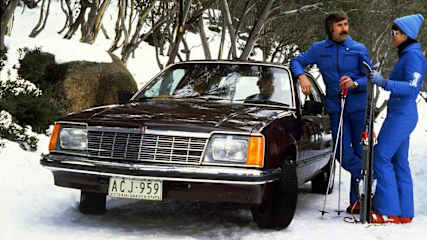
Holden Commodore name to live past 2017
Read the article
By Joshua Dowling · 20 Jan 2015
Holden has confirmed the imported car that will replace the Australian-made Commodore will inherit the iconic badge – even though it is widely speculated to be a front-wheel-drive car like a Toyota Camry, not a rear-wheel-drive car like every Commodore since 1978 and all homegrown Holden sedans dating back to the original in 1948.The decision has divided diehard Holden fans who believe the Commodore badge should be retired gracefully, just as Ford will assign the Falcon badge to the history books when it reaches the end of the production line next year.Holden says it interviewed 110 people and "70 per cent" voted in favour of keeping the Commodore badge once the Holden factory in Elizabeth falls silent in late 2017, ending 39 years of Commodore production, comfortably outlasting the iconic Kingwood badge which was dropped after 16 years.We will continue with the Commodore nameplateMarketing experts say a minimum of 1000 people need to be surveyed to get an accurate sample, but Holden says the study of 110 people were "in-depth customer focus groups conducted over a couple of hours to drill right down, not just a phone call"."We will continue with the Commodore nameplate," said the head of General Motors' international operations Stefan Jacoby."Commodore is very much embedded into Holden, it's part of the Holden history, it's part of what Australian customers want to have and we listened to our customers."Mr Jacoby said Holden is already testing the new model at its top secret test track in Lang Lang on the south-eastern outskirts of Melbourne. Holden is yet to confirm which engines will power the next Commodore but insiders have confirmed the vehicle will be available with four-cylinder and V6 power globally and there will be no V8.Holden said it is prepared for a possible backlashMr Jacoby also defended the mooted switch to front-wheel-drive."I'm coming from a front-wheel drive group – the VW-Audi Group – with this company we don't believe there is a true disadvantage between a front-wheel drive … towards a rear-wheel drive."Holden said it is prepared for a possible backlash but believes it has made the right move."We know the decision to retain or retire the Commodore nameplate will stir passionate responses among Holden fans and customers," said Holden sales director Peter Keley."That's why we'll ensure the next-generation car drives like a Commodore should. The vehicle will be tuned and honed by Holden engineers and technicians … ensuring it performs in Australian conditions and to Australian expectations."The next 'Commodore' will be the new version of the Opel Insignia, a German sedan that is also sold in the US and China as a Buick, but Holden will have input into design and engineering."Right now, our vehicle performance team is helping shape the next-generation Commodore for Australian customers," said Mr Keley.Once the 2018 version arrives it means the Holden Commodore will have come full circle; the original 1978 model shared its DNA with the Opel family and fleet sedan of the time.Retaining the Commodore nameplate is the right decision for HoldenHolden engineers modified the vehicle to suit Australian conditions. Over the next 30 years the Commodore shared less Opel DNA and eventually became a bespoke Australian design.But Holden insists the 2018 Commodore will find favour among local buyers."The next-generation large car we have selected from GM's global portfolio is worthy of the iconic Commodore nameplate," said Mr Keley."When it arrives in 2018, our new large car will honour Commodore's heritage and support a long and successful future for Holden in Australia.""Customers have confirmed that retaining the Commodore nameplate is the right decision for Holden."Have your say on our Facebook page: Should Holden call the imported front-wheel-drive sedan a Commodore?
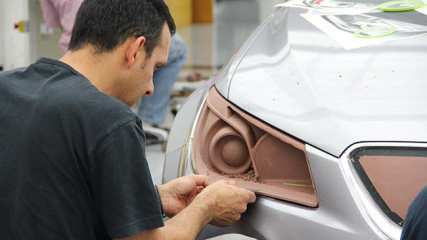
Holden design studio to stay once car factory closes
Read the article
By Joshua Dowling · 03 Apr 2014
THE global boss of General Motors, Mary Barra, has thrown a lifeline to Holden's design centre, securing its future and the jobs of 140 car designers once manufacturing comes to an end in 2017 -- and GM's first female CEO is expected to visit the facility within the next 12 months.Mary Barra's senior staff have told Holden executives that the company's design centre in Port Melbourne, which turns 50 this year, will be used to style cars for North America, China, India and the rest of the world.The Holden design facility is one of just 10 studios owned by General Motors globally and has already created the iconic Camaro sold in the US and the Cruze hatch sold internationally as a Chevrolet, among other models not yet on sale.The future of the Holden design centre, which has created every locally-made Holden since the 1966 HD (the Holden's sold before then, including the original 1948 'FX', were designed in the US) was under a cloud in the wake of the factory shutdown announcement."We have support from GM leadership," said former Holden design boss Mike Simcoe, who is now Vice President of GM international design."Mary Barra supports Holden design," said Mr Simcoe, during a rare behind-the-scenes media event at Holden's design centre. "When she was in charge of product development (before she became CEO) she agreed this studio should continue."I can't give you the quote because I can't speak for her, but she was very specific about keeping this place alive." Mr Simcoe said Mary Barra would likely visit Holden but would not speculate when.Mary Barra is currently facing a US senate inquiry into GM's handling of the recall of 4.8 million vehicles said to have a faulty ignition switch, and which is being blamed for accidents that resulted in 13 deaths.Mr Simcoe said it would be some time before a Mary Barra would visit Australia "with her just taking over the company and some of the stuff that's happening over there right now". Mr Simcoe added: "I was unsure about the future (after the manufacturing shutdown announcement). But I can honestly tell the guys who work for me there is no issue."At its peak in the early 2000s, when Holden was developing the VE Commodore, the company hired 250 designers, but has about 140 now working on mostly foreign projects "It's expensive to make things in this country but it's not expensive to design them," said Holden design Richard Ferlazzo.Mr Simcoe said Australia had a wealth of design talent because "we have more car brands on sale in Australia than most other countries, so the people who work here get exposed to more brands, from the cheapest to the dearest".This reporter is on Twitter: @JoshuaDowling

Holden LPG Commodore local engineering
Read the article
By CarsGuide team · 19 Mar 2012
Holden engineers clocked up some 1.3 million development kilometres in the LPG Commodore and produced 78 testing and evaluation prototypes.
Holden developed a `raft of local engineering solutions' for the LPG Commodore to improve driveability and to cut running costs. Holden claims the LPG car costs roughly the same to run as a small or medium-sized petrol car.
They evaluated liquid and vapour-injection LPG systems opting for vapour injection. According to Holden, vapour injection provides lower fuel consumption and lower CO2 emissions compared to liquid, while vapour also uses fuel more efficiently with fewer pumping and parasitic losses.
Holden says vapour systems are less mechanically demanding and therefore better suited to the varying grades of LPG fuel found across Australia. Ford, which uses Liquid LPG injection on its LPi Falcon, has a different view.
The heart of the LPG Commodore is the 3.6-litre, double overhead cam V6 engine, with four valves per cylinder. This engine has been re-designed to run solely on LPG and therefore has allowed for design optimisation in several key areas. As LPG contains a higher octane rating than petrol, new pistons of an optimised design have been used to raise the compression ratio to 12.2:1 to take full advantage of LPG fuel.
A particular highlight of the dedicated LPG Commodore is the new six-speed automatic transmission. Lighter, smarter and more refined, this new transmission boasts sophisticated control software that optimises shift patterns to provide outstanding driveability.
It produces 180kW of power and 320Nm of torque. In Omega spec, it records 11.8L/100km on the ADR combined cycle and the LPG range scores 4.5 stars from the Green Vehicle Guide, and exceeds projected Euro 6 exhaust emissions standards.
Touring range is around 700km from the 84-litre aluminium tank that resides behind the rear axle to optimise boot space. Dedicated LPG is available across a range of current Commodore sedans, Sportwagons utes and long wheelbase Caprice.
The additional cost is $2500 with a Federal Government rebate of $2000 available.
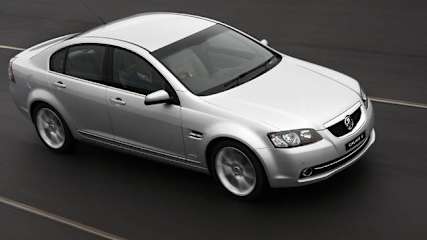
Speculation Holden Commodore to disappear
Read the article
By Karla Pincott · 22 Feb 2012
Tim Lee, the Shanghai-based president of GM's international operations was quoted in reports in the business press today, which speculated that the Holden Commodore would be phased out in favour of a ‘global’ car.
Lee reportedly said while visiting Melbourne that Holden had been one of the car giant’s strongest sellers in local markets, but that the GM business plan – like that of Ford – was moving towards global platforms.
However he said that GM would maintain "full-line capacity in Australia with designing and engineering, building and selling vehicles", according to reports in the Australian Financial Review and other business media.
The reports also quote Lee as saying that the "In the body shop the best way to do that is to have flexibility and to build two architectures and platforms. Maybe a mini car and a small car or maybe a small car and a compact car, or maybe a compact car and mid-sized car."
"We're going to build a s**t load more great Commodores,” he was quoted as saying. “It’s still an outstanding motor vehicle and one that we intend to produce for a long time. But if you look at the motorway here in Melbourne, you see a lot of small cars. You see a lot of more fuel-efficient vehicles on the roads than Commodore.”
The comments come after the release of a South Australian report, detailing that Holden's Elizabeth car manufacturing plant alone is worth more than $1.5 billion to the state economy each year and closure would lead to the loss of up to 16,000 jobs.
Premier Jay Weatherill released the report last week, after the State Opposition called for a cost-benefit analysis before the handover of more taxpayer money to the company. The study by University of Adelaide Business School head Barry Burgan, dated February 4, was handed to the state Manufacturing, Innovation, Trade, Resources and Energy Department. It does not comment on the merits of further taxpayer backing.
Holden is in negotiations with the state and federal governments over a bailout to keep the Elizabeth plant operational beyond 2016 and economists have forecast a $200 million price tag. The Federal Government will contribute the bulk of the funding.
Associate Professor Burgan's report finds there are 2700 people directly employed by Holden in Elizabeth. The company purchases $530 million of goods from ``core'' local suppliers, supporting 5610 jobs and prompts extra employment in retail, transport, construction and other manufacturing. But the report says closure at Holden would also lead to some growth in other industries and reduction in worker wages as supply of labour and resources currently invested in auto manufacturing shifted.
``Note that this report does not consider the issues around what is required to underpin the longer term sustainability of the operations at Holden,'' Prof Burgan writes. ``Nor does this analysis consider the full gamut of benefit and cost considerations in terms of policies to mitigate the risks identified.''
Opposition industry spokesman Steven Marshall said the Government had spent taxpayer money to deliver a report backing its political argument. Taxpayer support for car making needed to be based on a full cost-benefit study, he said.
Mr Weatherill told the South Australian Parliament the Elizabeth plant had long been ``the cornerstone of our state's industrial strength''.
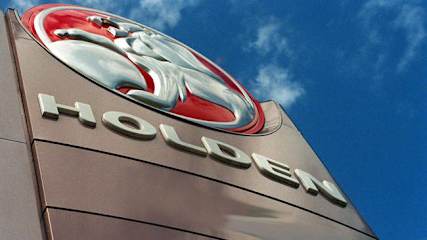
Holden Commodore 'could have won'
Read the article
By Mark Hinchliffe · 11 Jan 2012
The Koreans starred, the Japanese mounted a comeback, and One Ford hit the headlines with an extended family of Focus-based newcomers that it is certain to make a big hit in Australia. But it was one car and the commitment of its company chief that made the most impact as America fought back on the opening day of the 2011 North American International Motor Show.
Instead, Mazda3 won the 2011 title by just 812 vehicles. Holden boss Mike Devereux admits they could have "done things" to win, but says that is not their goal.
"Our goal is to be solidly profitable over the long term," he says. "We need to be a future-proof business.
"If market share comes, it comes from a solid business.
"Our main aims are to take care of our customers and make profits. Market share is just an outcome.
"Mazda3 was number one by just 600 units. Do you really think that at the last minute we couldn't have done something about that! "But we have a long-term plan.
"We are proud to have two of the top-selling cars and they are made in Australia (Commodore and Cruze)."
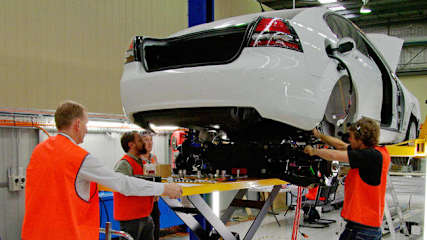
Holden Commodore electric in test
Read the article
By Mark Hinchliffe · 28 Oct 2011
The battery-powered Commodore is the first of seven being built by EV Engineering in Melbourne. Chief engineer Tim Olding, who spent 19 years with Holden, says the first test car is completed and would conclude validation testing by February.
It will be joined in June by six more test cars built as a "proof of concept project to demonstrate technical viability".
The eight-year project is a partnership with companies specialising in electronics, charging infrastructure and fleet vehicles and has been partly funded by a $3.5m government grant under the now-axed Green Car Innovation Fun.
Olding says they have also received assistance from Holden but "no promises".
"Holden gave us all the CAD (computer-aided design) for the base vehicle, access with their engineers to make the car function in the same way and access to their proving ground at Lang Lang," he says.
"But there have been no promises from Holden about building an electric car. This is a feasibility project to look at all the components. No promises are guaranteed."
Olding also said their conversion architecture could effectively be transferred to a Ford Falcon but refused to comment on approaches to, or from, Ford or any other manufacturers.
For the first time, Olding provided details of the electric car concept and the reasons for choosing the Commodore.
He says the Australian car industry's strength is in large rear-wheel-drive cars and the ability to build a variety of different models from the same architecture such as sedans, wagons and utes.
"It (the EV) should be able to be built on an existing production line alongside ICE (internal combustion engine) models," he says. "Rear-wheel drive is perfect for balance and for the placement of the electric powertrain."
Their EV Commodore concept replaces the Commodore's engine and transmission tunnel with 210 40amp-hour cells from Bosch; the same as used in BMW's electric concept cars. Olding says the modules can be built into the unusual engine/transmission tunnel shape.
The fuel tank is replaced by the power electrics module and the differential is replaced by the electric motor and gearbox between the rear suspension. "Even the upcoming Tesla Model S has a similar configuration," he says.
"There should be no major change to the engineering; that's the key component. This is the most cost-effective way to make an EV in Australia. "They should cost about the same as an ICE car, plus the cost of the battery."
Olding says the battery is anchored with quick-release connections so it can be swapped easily to alleviate anxiety over the estimated 160km range.
The car would also be chargeable from a home mains output. EV Engineering's consortium includes Bosch, Continental, Futuris, Better Place, Air International and GE, one of the largest owners of feet vehicles in Australia. The consortium is headed by Rob McEniry, former CEO of Mitsubishi Motors Australia.
Olding says GE will help conduct testing over the next two years. However, he says it is also feasible that an EV car could be produced for public sale before the official end of testing.
While Holden has no current plans for an EV Commodore, it will release the Volt next year which has an electric motor with a small petrol-powered "range extender" motor.
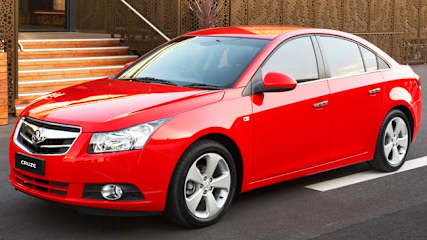
Toyota tops October car sales
Read the article
By Stuart Martin · 04 Nov 2010
However, the Holden Commodore was the top-selling model and now holds more than half the large-car market. The 3787 new Commodores sold last month was nearly 10 per cent up on October last year while Australian-made large car rivals Ford Falcon (2258 sales) was more than 20 per cent down and Toyota Aurion (just 785 sales) a whopping 45 per cent down from October last year.Vfacts figures issued yesterday by the Federal Chamber of Automotive Industries show that Holden Commodore is the only one of the three leading Australian-made cars to do better in year-to-date sales compared with last year.It meant Commodore accounted for just over half (51 per cent) of the large-car market, Holden's sales and marketing executive director John Elsworth said yesterday. The company's Cruze currently is an imported model and again figured in the top-10 selling cars in Australia las month."Next year will be an exciting time for Holden," Mr Elsworth said. "Our Australian-made line-up will grow next year to include the Cruze sedan and hatchback, making Cruze the only Australian-built small car when its starts to roll off the production line along side Commodore in 2011."The FCAI said total October new-vehicle sales were 80,925, on par with the same month last year, a drop in passenger car sales offset by a rise in demand for SUVs. The year-to-date total of 861,645 new vehicles is 13 per cent up on the first 10 months last year and heading for a one-million tally for this calendar year.Toyota easily remains most popular brand, its 16,329 sales last month 60 per cent greater than any other brand, helped by HiLux and Corolla being second and third to Commodore."Toyota is now positioned to finish the year with more than 200,000 sales a level never achieved by any other car company in Australia," Toyota sales and marketing executive director David Buttner said.Top 10 selling models last month(with year-to-date in brackets)1. Holden Commodore 3787 (38,407)2. Toyota HiLux 3001 (33,128)3. Toyota Corolla 2803 (32,144)4. Mazda3 2556 (32,604)5. Ford Falcon 2258 (25,209)6. Hyundai i30 2165 (26,014)7. Holden Cruze 2135 (23,532)8. Toyota Camry 1924 (19,456)9. Mitsubishi Lancer 1752 (20,062)10. Hyundai Getz 1575 (18,388)Source: Vfacts, Federal Chamber of Automotive Industries
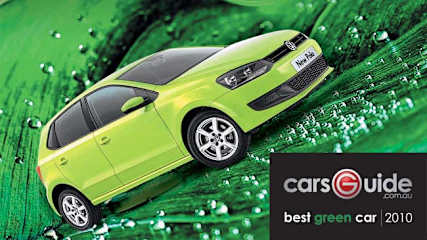
best green car | 2010
Read the article
By CarsGuide team · 02 Nov 2010
The 66TDI Comfortline, priced from $22,350 (over the $19,850 CCOTY-winning petrol 77TSI Comfortline) saw off a strong challenge from Toyota's Camry Hybrid to seal a remarkable double for a brand whose Golf 118TSI won the 2009 CCOTY.The small South African-made hatchback got home with 31 points over the $36,990 Camry sedan, the first petrol-electric hybrid made in Australia, which scored 28. The other challengers were both Holdens: the Korean-made Barina Spark city car, and the Commodore E85.Four of the Best Green Car's nine judges posted the Polo as their first choice, ensuring the narrow win.Judges were asked to consider the following these criteria:- Fuel consumption- Type of fuel and cost/availability- CO2 emissions- Impact on gross emissions (i.e. the net reduction in CO2 balanced against the expected sales of the vehicle)- Value of car- Safety of car- Technology of car- Function (including achievement of intended use, handling, performance)Aside from being the most frugal car in terms of fuel consumption, the Polo was felt by most to best satisfy all these stiff requirements. Running VW's newest small capacity turbo diesel, the 1.6 TDI puts out 66kW (as its model name conveys) and an extremely useful 230Nm from 1750-2500 rpm. This low down torque gives the little hatch the assertive punch of a bigger engine and enables economical cruising.The five speed manual version uses as little as 4.0 litres per 100km in open road conditions and 5.8 in the city for a hybrid-challenging 4.7 litres in combined use. The optional seven speed DSG adds $2500 to the purchase price, reduces combined fuel use to 4.6 litres while adding the convenience of an automatic transmission.Equally important in the context of the Best Green Car, the Polo TDI's emissions are a low 124 grams of Co2 per kilometre, 121 with DSG. While priced above the most cars of its class, the new Polo has greater technical sophistication and badge desirability, while in terms of function it is almost as roomy as a Mark IV Golf of the 1990s.As a driving experience, it's shaded by its petrol sibling, which also runs only a little less lean at 5.5L/100km, but the TDI runs on diesel rather than comparatively expensive premium unleaded petrol and its 45-litre tank will require less frequent refilling.Judge Neil Dowling sees it was a "case of proven diesel technology fighting upstarts with hybrid power," noting that the Polo has a "particulate filter to get hydrocarbon emissions right down".Says Stuart Martin: "Volkswagen's new Polo might not be the cheapest contender in the Best Green Car field but experience says it's a first-rate package - the diesel engine's numbers are tough to ignore."Karla Pincott goes further: "The little VW shows that you don't have to sacrifice style, safety - or even driving dynamics - on the altar of greener fuel figures."But it was a near-run thing. The Camry Hybrid found favour with guest judge, former rally ace and safety advocate, Ed Ordynski, who approves its combination of "remarkable fuel efficiency with strong performance, outstanding refinement and high safety levels and that efficiency gets better, the heavier the heavier the traffic".Carsguide managing editor Ged Bulmer was: "pleasantly surprised," by the Camry Hybrid, which is "better balanced, more sure-footed and a superior drive to its non-hybrid siblings"."As the first Australian-built hybrid it also represents an important dawn for local manufacturing of a technology that will only going to become more widespread," Bulmer says.Not that the others found no favour, Mark Hinchliffe saying the $12,490 Barina Spark is "the right frugal car for our times" and a "complete package with safety features such as six airbags and keen pricing".

Step inside TeamVodafone's V8 Supercar
Read the article
By CarsGuide team · 27 Oct 2010
Take a look at what’s under the skin of the TeamVodafone V8 Supercar Holden Commodore. Jamie Whincup lets us peel back the metal for a bare bones peek at the technology… SpecificationsTriple Eight Race Engineering5-litre V8635 + BHP limited to maximum 7500rpm120 litres1355kg (category minimum without driver)298km/h (185mph)3.55 secondsMotec and Freewave 900Mhz spread spectrum radio





